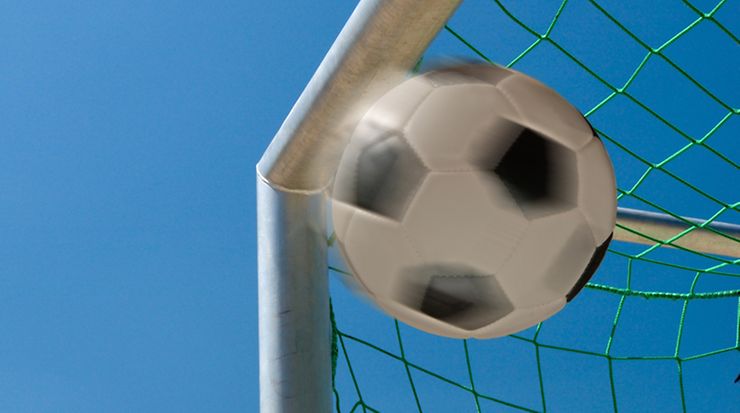Press
Staying on the ball
Although most people do not associate standards will this popular sport, standards are necessary for ensuring the fairness and safety of games.

Goals
Whether on the field or in the sports hall, the dimensions, materials and design of football goals in Europe are to meet the requirements of DIN EN 748. Equipment that complies with this standard will survive any goal-saving manoeuvre - and not fall apart as during the infamous Champions League game between Dortmund and Madrid in 1998. Not only does the standard lay down requirements on size (either 5,00 m or 7,32 m long) and frame and crossbar stability, it also specifies criteria for the "mesh breaking strength" of the net, as well as means of protecting the goal keeper from "frame entrapment".
(DIN EN 748 Playing field equipment - Football goals - Functional and safety requirements, test methods)
Synthetic turf
The turf of a football pitch is put to hard use and is exposed to all types of weather. DIN EN 15330 specifies performance and durability characteristics for synthetic turf sports surfaces used primarily outdoors. For example, the "water infiltration rate" needs to be sufficient so that large puddles do not form when it rains, and the required "colour fastness" keeps the colour from fading when the sun shines. Turf used for football pitches must also have the specified "vertical ball rebound" and "ball roll" properties.
(DIN EN 15330 Surfaces for sports areas - Synthetic turf and needle-punched surfaces primarily designed for outdoor use - Part 1: Specification for synthetic turf)
Shin guards
Football games can be quite rough these days, and shin guards are required even for children's games. DIN EN 13061 lays down general requirements for the ergonomics, innocuousness, sizing, coverage, performance, and cleaning of association (i.e. professional) football players' shin guards. The standard thus helps keep injury time outs to a minimum.
(DIN EN 13061 Protective clothing - Shin guards for association football players - Requirements and test methods)
Protective clothing
In a record-setting move Brazilian Roberto Carlos shot a goal in a free kick from 30 meters with the ball travelling at a speed of 142 km per hour. Although such shots are exceptional, goal keepers still need to be regularly protected against ball speeds of up to 100 km/h. DIN EN 16027 lays down specifications for goal keepers' gloves, thus providing protection against hand and wrist injuries.
(DIN EN 16027 Protective clothing - Gloves with protective effect for association football goal keepers)
Spectators' viewing areas
A true football fan wants to see the game live, in person - but what good is a viewing place where one can't see the pitch? DIN EN 13200-1 lays down criteria for seating arrangements - and for standing room areas - to ensure that all spectators can enjoy an unobstructed view of the game.
(DIN EN 13200-1 Spectator facilities - Part 1: Layout criteria for spectator viewing area)
Light and lighting
Some of the games of the European Championship will take place in the late evening, and if they are very close they may go on into the night. And during the winter most games are played in the dark - this means that the stadium lighting has to be such that every corner of the pitch is well-lit without subjecting the spectators to too much glare. DIN EN 12193 makes recommendations and specifies requirements for good quality sports lighting.
(DIN EN 12193 Light and lighting - Sports lighting)